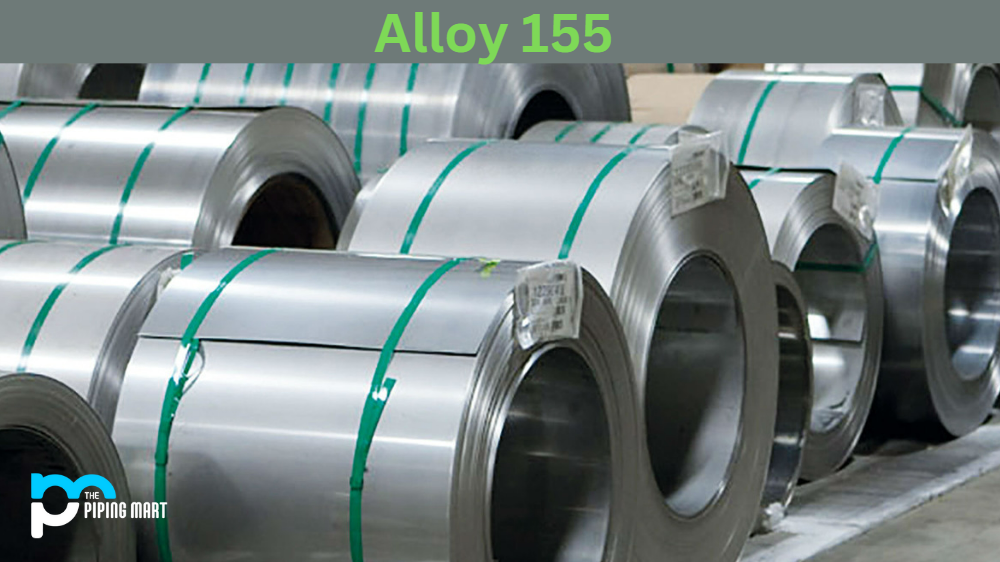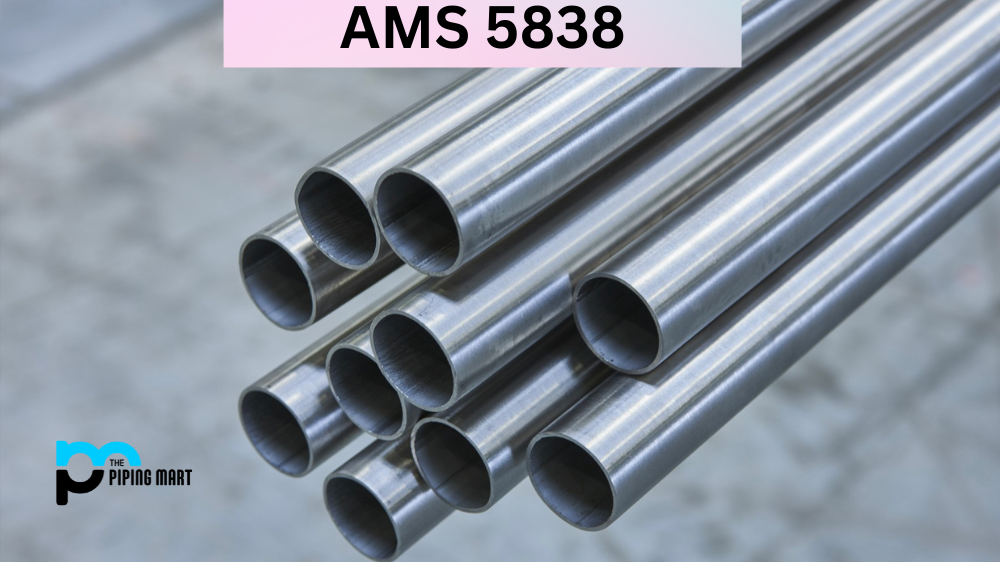Alloy 155 is a widely used nickel-chromium-manganese-copper alloy with excellent high-temperature strength and good stress-rupture properties. This alloy is commonly used in the aerospace, chemical processing, and power generation industries due to its outstanding resistance to corrosion and excellent weldability. This article will discuss the composition, mechanical and physical properties, uses, corrosion resistance, and welding of Alloy 155.
Alloy 155 Composition
Alloy 155 has a nickel base with chromium, manganese, and copper as its major constituents. It also contains small amounts of carbon, silicon, phosphorus, sulfur, and molybdenum. The alloy has a composition percentage of 57% nickel, 22-24% chromium, 9-11% manganese, and 3.5-5.5% copper.
| Element | Content (%) |
|---|---|
| Chromium, Cr | 20-22.5 |
| Nickel, Ni | 19-21 |
| Cobalt, Co | 18.5-21 |
| Molybdenum, Mo | 2.5-3.5 |
| Tungsten, W | 2-3 |
| Manganese, Mn | 1-2 |
| Silicon, Si | 1 max |
| Niobium,Nb + Tantalum, Ta | 0.75-1.25 |
| Carbon, C | 0.08-0.16 |
| Phosphorus, P | 0.04 max |
| Sulfur, S | 0.03 max |
| Nitrogen, N | 0.1-0.2 |
| Iron, Fe | Remainder |
Alloy 155 Mechanical Properties
Alloy 155 has excellent mechanical properties that make it a sought-after alloy. It has high-temperature strength and good stress-rupture properties to withstand heavy loads, making it suitable for high-temperature applications. The alloy has a tensile strength of 80 ksi and a yield strength of 35 ksi.
| Properties | Metric | Imperial |
|---|---|---|
| Poisson’s ratio | 0.298 | 0.298 |
Alloy 155 Physical Properties
Alloy 155 has outstanding physical properties that make it excellent for high-temperature environments. It has a melting point of 1325℃ (2420℉) and a density of 8.26 g/cm³. The alloy also has a thermal conductivity of 11 W/m·K and a coefficient of thermal expansion of 14.9 µm/m-℃.
| Properties | Metric | Imperial |
|---|---|---|
| Density | 8.19 g/cm³ | 0.296 lb/in³ |
| Melting point | 1343°C | 2450 °F |
Equivalent
- AISI 661
- AMS 5532
- AMS 5585
- AMS 5768
- AMS 5769
- AMS 5794
- ASTM B639
- DIN 2.4964
- GE B50A484
Alloy 155 Uses
Alloy 155 is widely used in various industries due to its outstanding properties. It is commonly used in jet engine parts such as combustion chambers, afterburners, and exhaust system parts. The chemical processing industry also uses Alloy 155 widely in producing heat exchangers, reactors, and piping systems. The power generation industry uses Alloy 155 in turbine blades and vanes.
Alloy 155 Corrosion Resistance
Alloy 155 has excellent corrosion resistance, making it suitable for harsh environments. The alloy possesses a high degree of resistance to oxidation at high temperatures of up to 1000℉. It is also resistant to attack by various acids such as sulfuric acid and hydrochloric acid. Additionally, Alloy 155 is highly resistant to stress-corrosion cracking.
Alloy 155 Welding
Alloy 155 has excellent weldability properties. The alloy can be welded using various techniques such as Gas Tungsten Arc, Gas Metal Arc, and Plasma Arc welding. Alloy 155 is, however, prone to mmicro-fissuringand hot cracking during welding. Preheating is, therefore, necessary to prevent these issues.
Conclusion
Alloy 155 is a nickel-chromium-manganese-copper alloy with excellent mechanical and physical properties such as high-temperature strength, good stress-rupture properties, and good weldability. The alloy is widely used in the aerospace, chemical processing, and power generation industries due to its excellent resistance to corrosion and outstanding mechanical properties. Alloy 155 has many uses, accompanied by excellent resistance to harsh environments and stress-corrosion cracking. It is also weldable using various welding techniques, but preheating is necessary to prevent micro-fissuring and hot cracking.

Hey, I’m Krutik, a casual blogger expert in the metal industry. I am passionate about providing valuable information to my readers. With a background in engineering and construction, I like playing Cricket & watching Netflix shows in my free time. Thank you for visiting my blog, and I hope you find my information helpful!




